
19 minute read
WRC 2022
Tubular belles
With spaceframe chassis, hybrid powertrain and more constrained aero, 2022 World Rally Cars are unlike any before. Racecar investigates
By LAWRENCE BUTCHER
For the first time ever in the history of rallying, cars competing in Rally1 share no major item whatsoever with the production cars they are based upon

Chris Williams, technical director at M-Sport
Rallying changed forever as the 2022 WRC season got underway in Monte Carlo. Since the genesis of the sport, competing cars have always been based on production bodyshells. Even in the radical days of Group B, the cars used limited run road car chassis. Though large chunks of the last generation WRC machines were chopped out to make room for rear differentials, and outer skins stripped away and replaced by carbon or Kevlar, they were still showroom models underneath.
The new era of Rally1 may look similar to last year, with pumped-up, steroid-fuelled version of the Yaris, Puma and I20, but none share a single major part with their common or garden roadgoing versions. Under the bodywork, now entirely composite in construction, sit tubular spaceframe chassis, encasing a spec hybrid system.
No longer are manufacturers constrained by rules tying them to particular models in their ranges, hence why Ford’s Puma – a mini SUV – is sharing space on the stages with Toyota’s Yaris shopping mobile, albeit a three-door, homologation special, thanks to the much-lauded GR version.
Dan Bathie
Staying alive
This then, is the future of rallying, and how we got here was best summed up by Hyundai’s now departed (and much missed) former team principal, Andrea Adamo. Speaking when the final details of the rules were still being hammered out, and before Covid threw the world into disarray, Adamo stated in his endearingly blunt fashion: ‘We need to be in a situation where a manufacturer can use the model that they need to sell. If we want to say alive, we need cars that will be acceptable to the marketing types.
‘It’s the manufacturers driving this sport, not the FIA or the promoters. Your board will tell you, this is the budget, I need to promote this model, end of discussion. There is no romanticism.
‘The alternative is you don’t have it. It’s like my mother, you either eat your soup or you go to bed without dinner.’
So it was that rules dictating what are, in effect, silhouette racers came to be. And, in the opinion of one technical director, a framework established that will likely become the norm in rallying’s future. As more manufacturers move towards EVs, road to rally car conversions will no longer be practical. Scratch-built chassis could become the only cost-effective way to create competition machines. Not to mention the safest.
When devising the new regulations, the FIA had two key considerations in mind: giving manufacturers flexibility to run a wider variety of body styles, while also incorporating safety features that were impractical if using a production car base.
For example, the space available for side impact protection, one of the biggest areas of concern in rallying, is now much greater. Packaging the hybrid system as far as possible from harm’s way was also a prime consideration.
A new core
In overview, the central spaceframe incorporates three main hoops encapsulating driver and co-driver, with extensive triangulation between them. The lower door sections feature considerable reinforcement, with a passing resemblance to structures used in NASCAR’s latest Stock Car chassis. The protection afforded by this reinforcement is augmented by large areas filled with energy absorbent foam of varying densities. Tied into this central ’cage are support structures for the front and rear suspension. Previously, the production chassis would extend to almost the furthest extremities of the cars. Now, the tube frames stop just after the front and rear axles centrelines, with only additions necessary to support the bodywork reaching beyond this point.
In the run up to, and during, the opening round of the season, the WRC’s top-flight drivers certainly put the new safety measures to the test. During pre-season running Hyundai’s Thierry Neuville had a spectacular off. The accident itself was not caught on camera, but the resulting carnage was, namely his demolished car sat down a ravine in a river.
Come the Monte, it would be M-Sport’s young hot head, Adrien Fourmaux, who went for maximum air and style points, barrel rolling his Puma and coming to rest at the bottom of a cliff. In both cases, the damage looked more serious than it would have done on a 2021 car, due to most of the vestigial bodywork detaching, leaving the safety cell exposed. However, neither crew suffered more than bruised egos (and, in Fourmaux’s case, a team starting to lose patience with his car-wrecking antics), testament to the phenomenal strength of the new machines.
Moveable freedom
The general opinion across the service park in Monte Carlo was that the clean-sheet chassis rules removed some problems, while creating new headaches. Toyota technical director, Tom Fowler, sums up: ‘I think the total amount of freedom is probably about the same, it’s more a shift in freedom.’
Fowler highlights the design of the front suspension crossmembers as an example. Here, the previous production-based rules required certain parts stay in their stock locations, and be worked around. ‘Depending on your base car, this always gave a certain challenge and ruled out some concepts for sure. In that sense, the freedom is increased.’

Drivers are encased in a spaceframe chassis that are incredibly strong with essentially three hoops married by triangular struts
With safety a prime consideration, side impact structures have developed, with more space available for energy absorbing materials
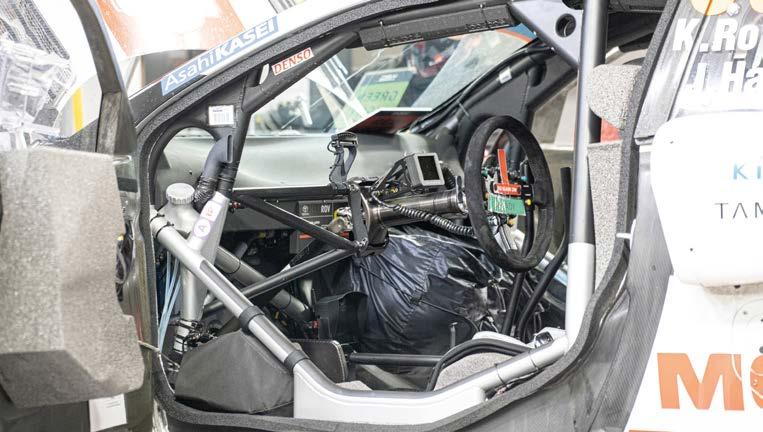
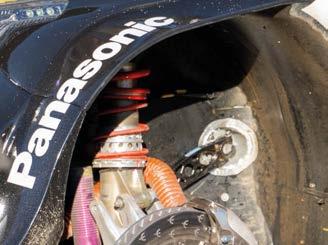
Lawrence Butcher Lawrence Butcher
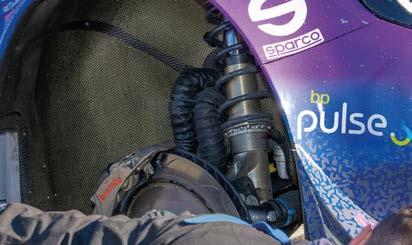
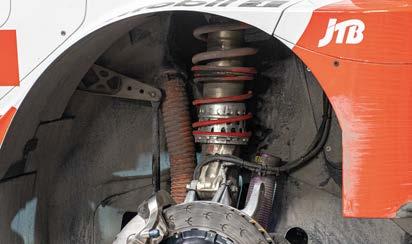
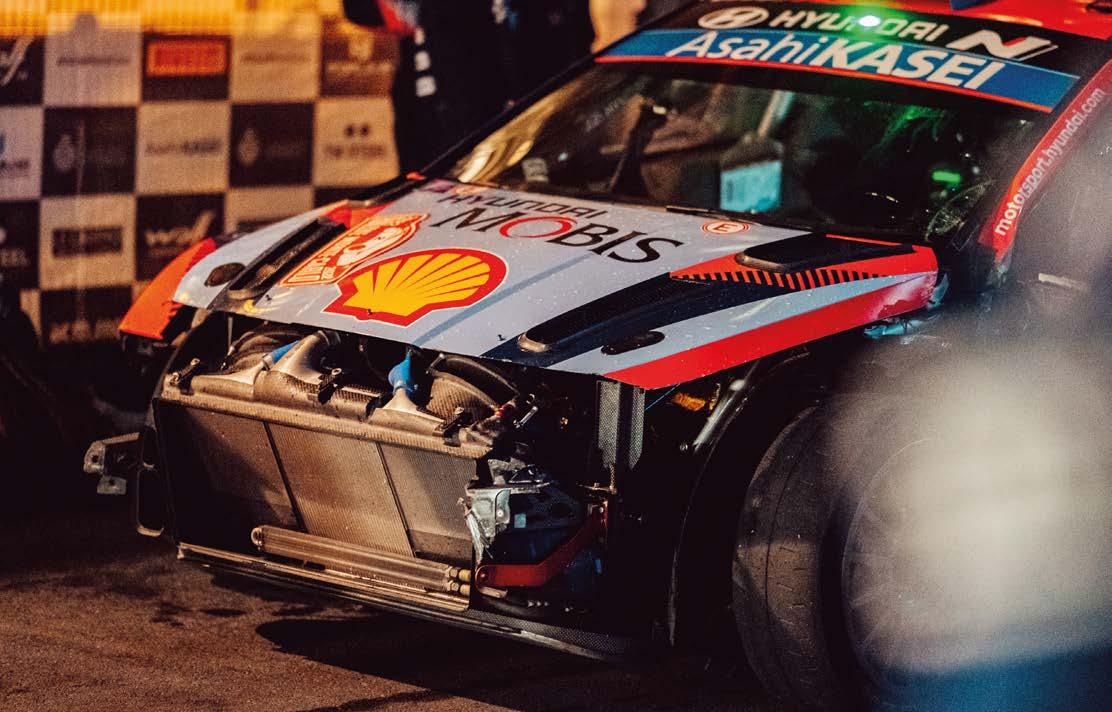
However, that’s not the case everywhere, as his comments regarding the central chassis area show: ‘The chassis and, more particularly, the safety cell is designed to an FIA regulation based on the crash testing calculations they performed. The result is that compared to the previous safety cell, there are more members involved, with an increase in the total number of tubular structures used, and the majority of those are fairly well tied down to their position. We have ended up with a fair few geometric constraints in the safety cell, and so the limitations have increased.’
M-Sport technical director, Chris Williams, agrees. ‘We must all carry certain elements, and those elements must sit within certain volumes. We all have to work to a quite a tight measurement in certain areas.
‘However, you will see all of the cars are slightly different, where we’ve taken the regulations and adapted the architecture to how we want to best present our cars for overall performance.’
One area where there has been a notable divergence in approach is the treatment of the suspension struts, specifically, their location in relation to the axle centrelines. Since at least 2017, both M-Sport and Toyota have offset their suspension struts relative to the axle line, allowing for a longer damper with greater travel. Hyundai, on the other hand, stuck with mounting its dampers in line with the axle. For 2021, the situation was reversed, M-Sport and
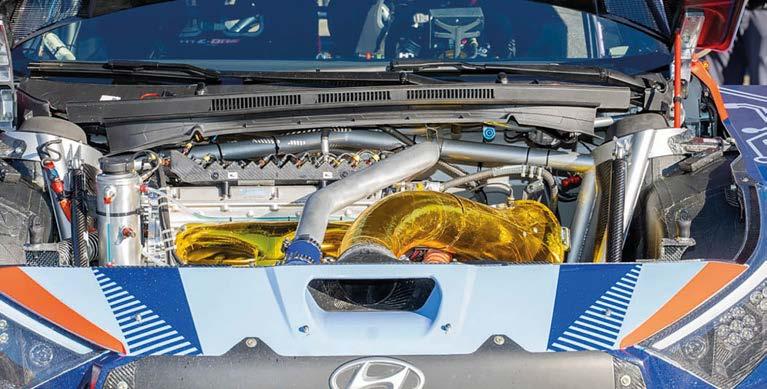
The intricate engine bay ducting previously used to drive airflow over the cars’ outer surfaces has now been banned, so cooling packages for the largely unchanged, 1.6-litre, turbocharged, inline four-cylinder engines required extensive re-development
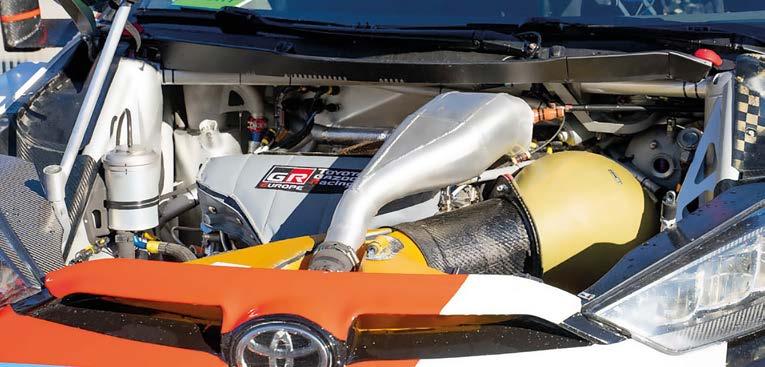
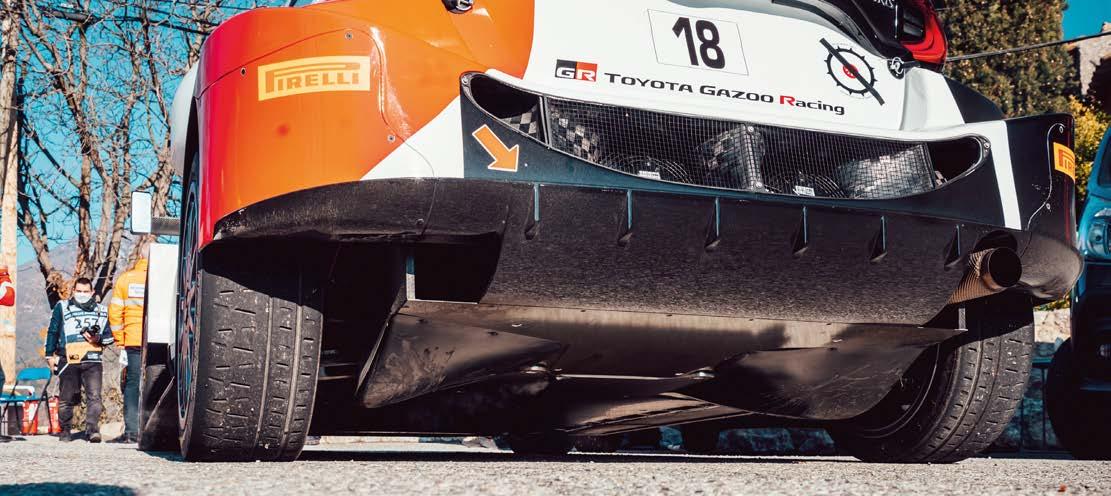
Clearly, aerodynamics are still a critical design element, but the outrageous dive planes, louvres and diffusers of the previous generation WRCs are now gone, replaced by less potent solutions
Toyota placing them in line, Hyundai going for quite an extreme offset.
When asked about Toyota’s approach, Fowler explains how things changed once travel was limited to 270mm (it was previously unlimited, with at least Toyota and M-Sport running well over 300mm). ‘One of the first questions our suspension design team was asked to answer during the very early concept stages was, ‘Okay, we’re going to limit the travel to roughly x, can you fit a strut on top of the driveshaft without offsetting it, and still have the maximum travel?’ After some work, the answer was yes. So that’s where it went.’
Hyundai’s deputy team principal, Julien Moncet, remains tight lipped about his team’s choice, saying only that it was as a result of the new regulations. However, Fowler was candid when asked for his opinion on the competitions’ approach: ‘When we first saw their homologation papers, we were a bit surprised. But suspension design and kinematics is an area of motorsport that some people have very strong opinions about, for whatever the reasons might be.’
Hybrid development
On the surface it would be easy to assume that the hybrid systems, being spec units, would not offer teams much room for development. But after a great deal of bartering when the regulations were being hammered out – at one point it seemed the FIA would mandate spec deployment strategies as well – teams have retained considerable scope to tailor the energy deployment and regen’ from the 100kW system.
Developed by Compact Dynamics, a subsidiary of Schaeffler, the hybrid takes the form of a single, drop-in unit, encapsulated within what is effectively a ballistic box holding the motor, inverter and battery. The only external connections are for the liquid cooling circuits for the motor, inverter and battery, the latter supplied by Austria-based Kreisel, and using direct fluid cooling of the individual cells. Plus the charging system.
The cars are capable of fully electric operation, which must be used on certain non-competitive stages of each rally, with a range of 20km possible.
As soon as the first development hybrid units reached teams, they were keen to characterise them and start developing control strategies, as Williams recalls: ‘The very first thing we did was take the unit and put it on the dyno, to be sure we could control it, calibrate it and have a good set up before we go anywhere near a car.
‘After that, we’re doing lots of work on the dyno to make sure we can control it with the strategies we want to use to get the best performance. As well as just reliability and durability testing, that kind of thing.’
The layout of the hybrid is interesting in that the motor generator is offset from the centreline of the car, with a cut out in the underside of the hybrid housing to allow the propshaft to pass from the transmission at the front of the car (attached to a largely unchanged from 2021, 1.6-litre, turbocharged in-line four) to the rear differential. Drive from the MGU is fed into the powertrain via
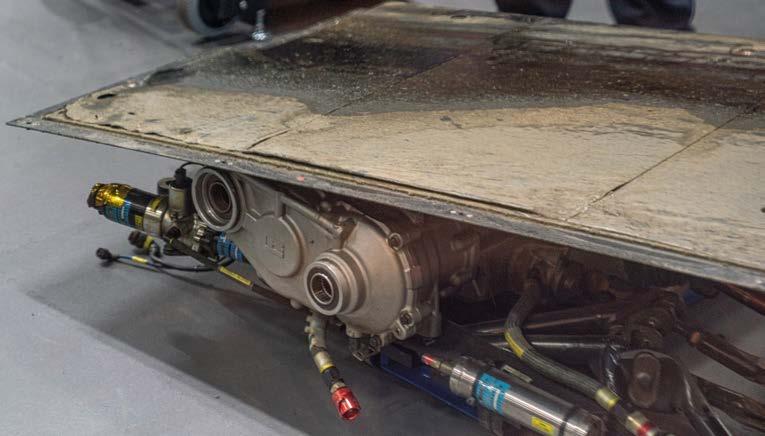
a second propshaft, connecting to the rear differential offset to the main propshaft.
Teams kept their rear differentials under tight wraps in Monaco, but it was possible to gain a glimpse (see p61) of Hyundai’s Ricardo-produced unit when Ott Tänak’s car retired from the rally for other reasons, but the damage left the part exposed.
Added complexity
Feeding power from the MGU into the rear differential, and in turn the entire four-wheeldrive system, meant achieving consistent behaviour in the driveline was a fiendishly complex task. This is both a mechanical issue and one of mapping, while also dictating packaging at the rear of the car.
Fowler explains: ‘I think we had about 10 different solutions for this. We had a lot of options, because it affects a huge number of things. Fuel tank volume being one of them, as well as the c of g related to your tank.
‘The rear suspension packaging also really depends on how you manage to get a rear differential, a small gearbox to adjust the ratio from the motor with a drop gear and two propshafts into that space.
‘It was something that had to be decided early on, and was very important to the final product. So we went through it quite carefully and there were certain challenges in making sure it was efficient, both in terms of transmitting torque, but also in being small, light and in the right place.’
Beyond the packaging and mechanical design challenges, there remained the tricky matter of mapping power delivery from the MGU. And, just as importantly, energy regeneration under braking. If there is one thing a rally car must be, it’s consistent. With conditions, and sometimes even surfaces, changing from corner to corner, drivers must be confident their throttle and brake inputs will translate to the same response from the car every time. With in the region of 500bhp on tap with the MGU and IC engine at full blast, the new cars are capable of catching even the sharpest driver out.
Each manufacturer is permitted to homologate three deployment and three regen’ maps, shared across all of their drivers, which are then fixed until the next homologation window. These must work on tarmac and gravel stages, and suit a variety of different driving styles. Maps can be switched between stages, but not during.
For some, mapping was clearly still a work in progress on the Monte. Toyota driver, Sebastien Ogier, commented that his Yaris was not entirely to his liking after tackling mixed stages of ice and dry tarmac on the second day of running: ‘It is not compromising me in every section. There are some profiles where it is fine and some where I struggle.’
For Toyota, development of its maps has been, and continues to be, a complex affair, encompassing simulation, bench testing and track testing using torque sensors to gather data. Fowler: ‘We’ve done quite a lot of work on it, because it presented some fundamental dynamic problems we needed to solve. It’s certainly an area that needs to be developed further still.’
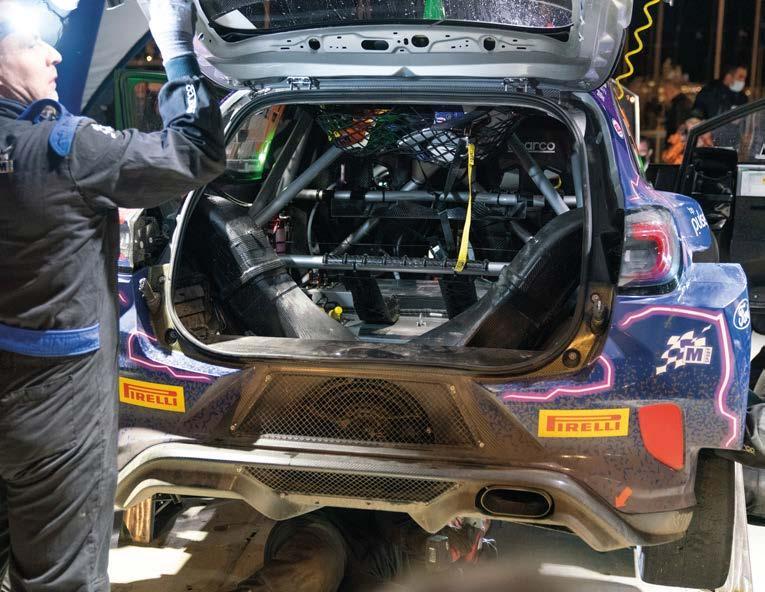
Due to strict FIA regulations on aero packages, another big challenge for manufacturers has been cooling the rear-mounted MGU
With the MGU feeding power into the rear differential via a small additional gearbox, rear suspension packaging is necessarily tight
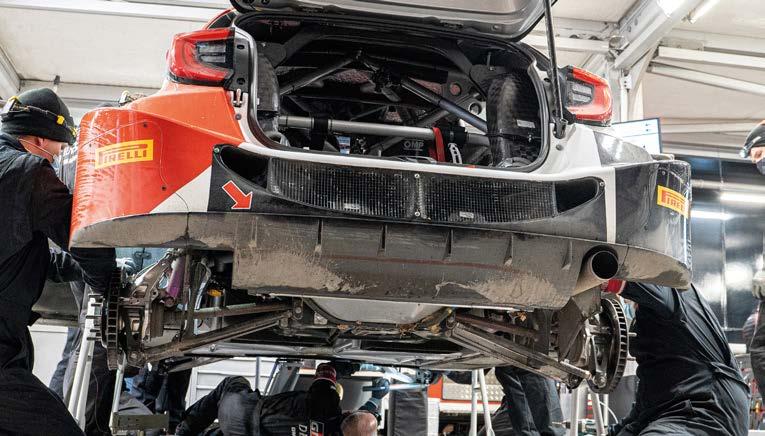
Aero restraint
If an entirely new chassis, and the introduction of hybrid power, was not enough for teams to contend with, the aerodynamic regulations have also come in for a shake up. In the name of cost control, the considerable freedoms dished out in 2017 have been reined in.
Everyone agreed that the last generation of cars looked fantastic, but they were excruciatingly expensive to develop.
Toyota led the charge in 2017, with a no-holds barred approach to aero development that left the Yaris looking like the TS050 LMP1’s stunted love child.
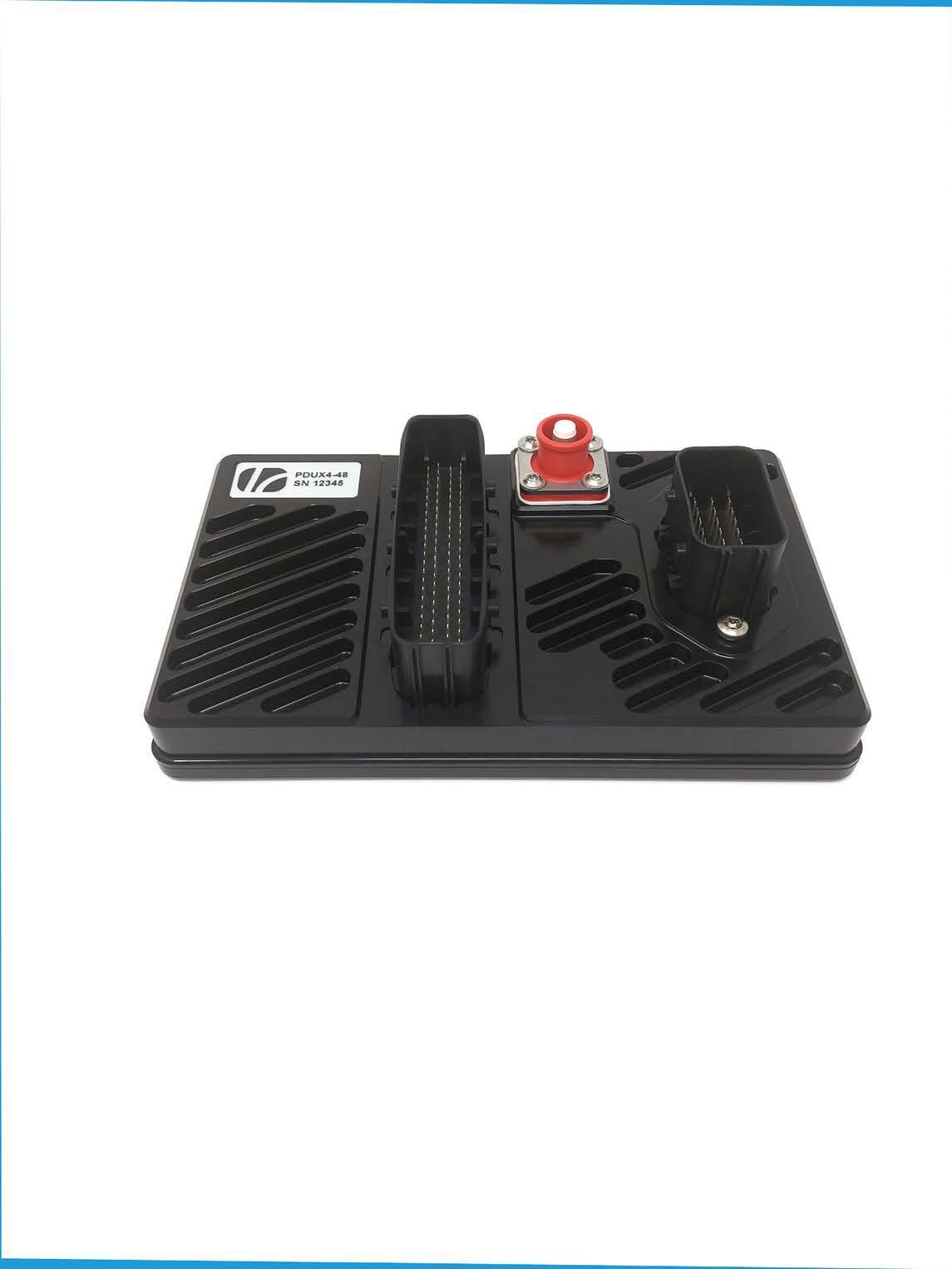
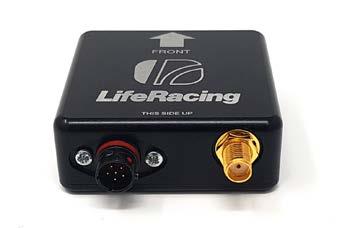
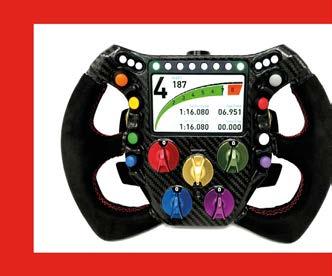
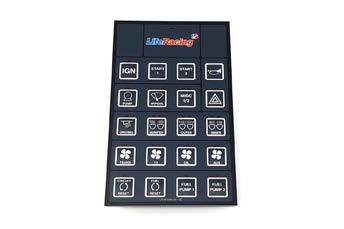
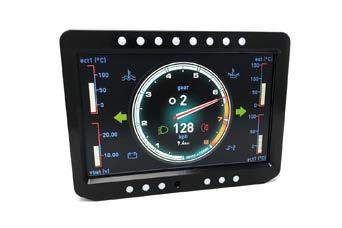
Fowler acknowledges the team left no potential performance avenue unexplored: ‘What happens with aerodynamics in WRC – I mean, from engineering point of view, we enjoyed it – but it was a bit silly.’
He also happily takes responsibility for the development battle that ensued. ‘Probably a big proportion of the fault lies in our design office. Maybe too many late nights or something. But certainly, when we drew a line in the sand at Monte Carlo 2017, the rest said, ‘okay, they’re doing something there.’
‘I think that fired them up. Everybody then went looking for every gain available. I think the [new] regulations going in this direction is good for everybody.’
The new rules direction has seen much of the spectacle of the old cars retained, but complex elements such as dive planes, wheelarch louvres and diffusers are now banned, as is the intricate duct work under the bonnets, used to fine tune airflow over the outer bodywork. Aerodynamics are still important, but the sum total of the bodywork additions is less potent now than before.
Fowler does, however, caution that when rules become more restrictive, they are also harder to police. ‘When you don’t have laws, or very few, simple laws, you can easily monitor what’s going on. But when you have very strict rules, in order to keep the integrity of them, you have to police them strongly.’
This has changed the relationship between teams and the FIA. Fowler explains: ‘One of the things with how we deal with aerodynamics with the FIA, which differed from the previous, is that we have been sharing 3D CAD with them for many months. Showing them our planned homologation bodywork and then getting feedback about whether it complies with the rules or not.’
Chris Williams, technical director at M-Sport
Surface constraints
On this last point, all three manufacturers’ initial stabs at bodywork fell foul of what the FIA envisaged, so they were told to go back and try again. ‘We’ve been constrained on surface shape,’ says Williams. ‘We had some quite dramatic surface shapes at one point, but were deemed to not really be adhering to the regulations, so some had to be removed. It’s been quite strict in certain areas. The FIA have been fairly forceful, let’s say, pushing the aero in the direction they want. Anything that was even marginally in the grey area has been removed. So you will see the cars’ look in certain areas is very similar.’
One particularly challenging aspect for the teams, related to both the aero package and hybrid system, was cooling the latter. Looking across the service park, considerable variation in elements such as cooling scoops on the rear quarters and their associate internal ducting were to be seen. Fowler notes that initially, his engineering team did not think it would be possible to incorporate sufficient cooling capacity, within the constraints of the rules, to accommodate they hybrid’s needs across all rally conditions. However, after an intense development programme in both the virtual and physical domains, he feels they have reached around 95 per cent of the capacity required.
One final point on the aerodynamics of the new cars was also raised by Fowler. With fewer toys to play with, the relative gains to be made from finding an improvement in any area should be higher than before. This applies across the whole car, and although they are less extreme than before, there will be no let up in development any time soon.
With M-Sport and Toyota seemingly evenly matched out of the blocks, and Hyundai having to play catch up, rallying’s new era shows promise, particularly if the rules revamp can succeed in attracting a new manufacturer or two.
Ricardo in Rally1
As a company, Ricardo has a long history in the World Rally Championship. Stemming from research into the benefits of allwheel drive and the development of the viscous coupling through the middle of the last century, Group B was a landmark change in the use of both technologies in rallying and Ricardo has been involved in this competitive arena ever since.
When the regulations for a series change, it’s normally the best time to try and gain a competitive advantage. The change to the new Rally1 regulations for 2022 has allowed Ricardo to leverage technologies from several different competitive arenas to try and develop the most competitive R1 driveline possible.
Working with a long-established partner is also a valuable step in reducing development issues. Avenues of communication are already well established, and the cross-company teams have the same frames of reference from existing programmes.
It is this background that led Hyundai Motorsport GmbH (HMSG) and Ricardo to come together to develop a new driveline for the Hyundai i20 N Rally1. The intention was to use some of the rally-proven components from their existing joint venture, the Ricardo driveline fitted to the Hyundai i20 R5. Refinements were planned to be introduced based on experiences from WRC and Formula E.
With the emphasis on cost reduction, semiautomatic gearshifts and centre differentials are now forbidden in the new Rally1 regulations. This prompted the use of technologies taken directly from the R5 product, namely the manual gearshift arrangement and its associated technologies in the gearbox, and the handbrake disconnect function in the rear axle.
Damage limitation
For Rally1, however, the partnership has continued to develop the gearshift to further reduce shifting loads in comparison to the R5 unit. Having stepped back from a semiautomatic ’shift, the risk of gearbox (and engine) damage with a missed manual shift has increased substantially, and anything that can be done to offset this is critical.
The handbrake disconnect unit has also seen some refinements over the R5 version. This is to ensure a more consistent operation in Rally1 with the increased torque the unit sees in that application, and to allow adaptions to add the hybrid drive to the rear axle. Ricardo has employed learnings from their success in Formula E here to help with this installation.
The hybrid drive gear train in Rally1 is restricted by regulation, meaning the ultimate solution for these components is somewhat compromised by the rules concerning gear face width, casing wall thickness and minimum axle weight.
The World Rally Championship, by definition, rallies all over the globe. No other discipline sees the variety of conditions a Rally1 car will see throughout a season of competition. This means that an ultimate solution needs the very best in drivetrain engineering to ensure performance and reliability, whilst complying with the new regulations. Taking lessons learnt from an existing, reliable product and adding refinements from other programmes to suit this revised application is what Hyundai Motorsport and Ricardo have been working towards throughout the joint development of this new driveline. Results during the new season will hopefully verify this philosophy.
‘We’ve partnered with Hyundai Motorsport in R5 for a number of seasons now and it’s fantastic to extend this working relationship to include the Hyundai i20 N Rally1,’ says Steve Blevins, head of engineering at Ricardo’s Performance Products team. ‘We announced our technical partnership with Hyundai Motorsport for all their four-wheel drive drivelines in April 2021 and this programme is the latest manifestation of this. Collectively, we’ve decades of experience between us and we’re hoping this will ultimately be reflected in the performance of the driveline in competition through the 2022 season and beyond.’










